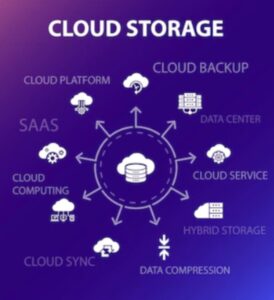Containers are a type of virtualization for operating systems. A solitary container may host everything from little services or programming activities to a huge app. All compiled code, binary data, frameworks, and application settings are contained within a container. Containers, in contrast to host or device virtualization techniques, do not include OS copies. As a result, they are lighter and much more mobile, with significantly less expense. Several containers could well be installed for one or much more container groups in bigger commonly used software (Hussein, Mousa and Alqarni, 2019). A container scheduler, such as Kubernetes, may handle such groups.
Container as a Service (CaaS)
Containers as a Service (CaaS) is a cloud-based option that enables app developers and IT organizations to use container-based virtualization to load, organize, execute, manage, and control containers. CaaS primarily refers to the automatic management and installation of container development tools. In CaaS, developers must install, operate, and manage the hardware on which containers operate. This architecture is a combination of cloud computers and networking traffic devices that must be overseen and managed by specialised DevOps employees.
CaaS allows developers to operate at the upper-level container stage rather than getting bogged down by lesser hardware maintenance (Piraghaj et al., 2015). This provides a developer with greater clarity on the ultimate product, allowing for even more flexible performance and increased consumer experience.

CaaS features and benefits for DevOps
CaaS solutions are used by companies and DevOps teams to:
- Increase the speed of software development.
- Develop creative cloud services at scale.
SDLC teams may deliver software platforms quicker while lowering the expenses, inefficiencies, and wasteful waste procedures that are common in technology design and delivery.
The benefits of CaaS are-
· CaaS enables it simpler to install and build application software, as well as to construct smaller services.
· Throughout programming, a container accumulation might manage various duties or programming settings (I Putu Agus Eka Pratama, 2021).
· A container network partnership is defined and bound to transport.
· CaaS guarantees that such specified and specialised container architectures may be swiftly installed in cloud computing.
· Assume a fictitious software system created using a microservice model, where the operation design is organised with a specific industry ID. Transactions, identification, and a checkout process are examples of service areas.
· Such software containers could be immediately deployed to a real-time framework using CaaS.
· Uploading programmes deployed on the CaaS system allows program effectiveness via the use of tools like data incorporation and analysis.
· CaaS also incorporates automatic monitoring efficiency and coordination control integrated into.
· It helps team members to rapidly create clear views and decentralized applications for high reliability.
· Furthermore, CaaS empowers developers by providing quicker installation.
· Containers are utilised to avoid focused distribution, however, CaaS can save technical running expenses by lowering the number of DevOps people required to handle installations (Saleh and Mashaly, 2019).
Container as a Service (CaaS) drawbacks:
- The tech provided differs based on the supplier.
- It is risky to extract corporate information from the cloud.
CaaS Security Concerns
-
- Containers are regarded as better than Windows Processes, although they do pose certain hazards.
- Containers, despite being easily configurable, use a very similar kernel to that of the OS.
- If indeed the containers are attacked, they are all in danger of becoming attacked (Miller, Siems and Debroy, 2021).
- When containers are installed within Cloud through CaaS, the hazards multiply dramatically.

Performance Restrictions:
· Containers are obvious sections that do not operate on physical hardware.
· Something is lacking with the additional level between both the physical hardware as well as the program containers and their contents (Liagkou et al., 2021).
· When these are combined with the container’s system failures connected with the dedicated server, the consequence is a considerable decrease in performance.
· As a result, even with elevated equipment, enterprises must expect a significant decrease in container performance.
How Does CaaS Work?
A container as just a service is a digital cloud that can be accessed and computed. Customers utilise the cloud infrastructure to distribute, build, maintain, and execute container-based apps. A GUI and API requests could be used to communicate with a cloud-based system (Zhang et al., 2019). The core of the CaaS system is an administration feature that allows complicated container architectures to be managed. Instrumentation technologies connect running containers and allow for automatic actions. The CaaS platform’s current operator has a powerful effect on the services supplied by customers.
Why is CaaS important?
- Assists programmers in developing fully scalable containers and configuration management.
- It aids in the simplification of container management.
- Aids in the automation of essential IT operations such as Google Kubernetes and Docker.
- Increases team building speed, resulting in faster design and delivery.
Conclusion
And here is why several business owners love the containers. Containers’ benefits greatly exceed any downsides. Its simplicity of use, resource efficiency, simplicity, and universality makes it a strong frontrunner among coders.






